
Italy Page 29
Move on to Rome Photos Page 30
Wingspread Records Home
Copyright © 2025 Wingspread Recording Ltd. Co.
Pompeii
After our trip along the Amalfi Coast, we visited the archeological site of Pompeii. Pompeii is a partially buried Roman city near modern Naples that was, along with its sister city of Herculaneum, completely buried during a long catastrophic eruption of the volcano of Mount Vesuvius in 79 AD. The eruption, which lasted two days, buried Pompeii under 12 to 18 feet of ash and pumice. The city was lost for over 1500 years before its accidental rediscovery in 1599. Since then, its excavation has provided an extraordinarily detailed insight into the life of a city at the height of the Roman Empire. Interestingly, Pompeii was originally a Greek city, and was later taken over by the Romans. The influence of it earlier Greek culture continued on into its Roman era. Pompeii was an incredibly modern city in its day; the city even had running water, carried by way of lead pipes.
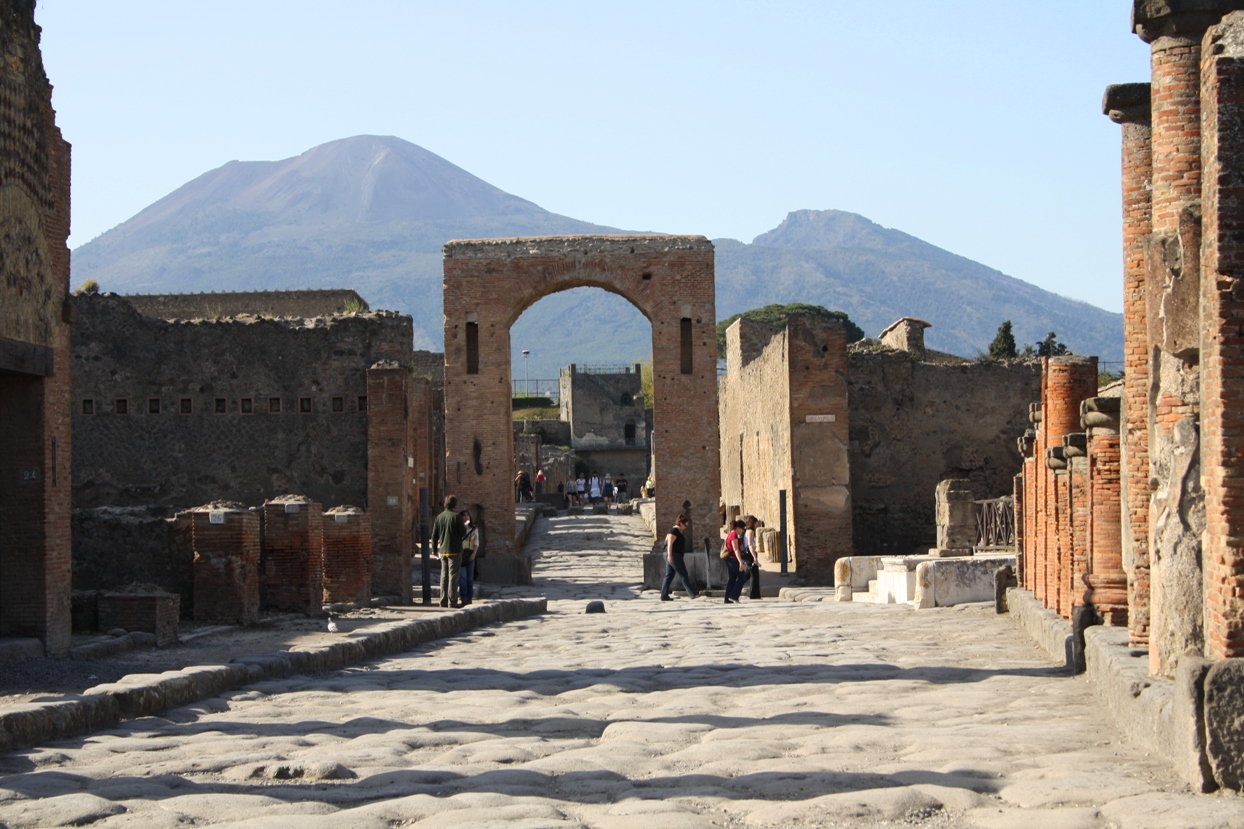
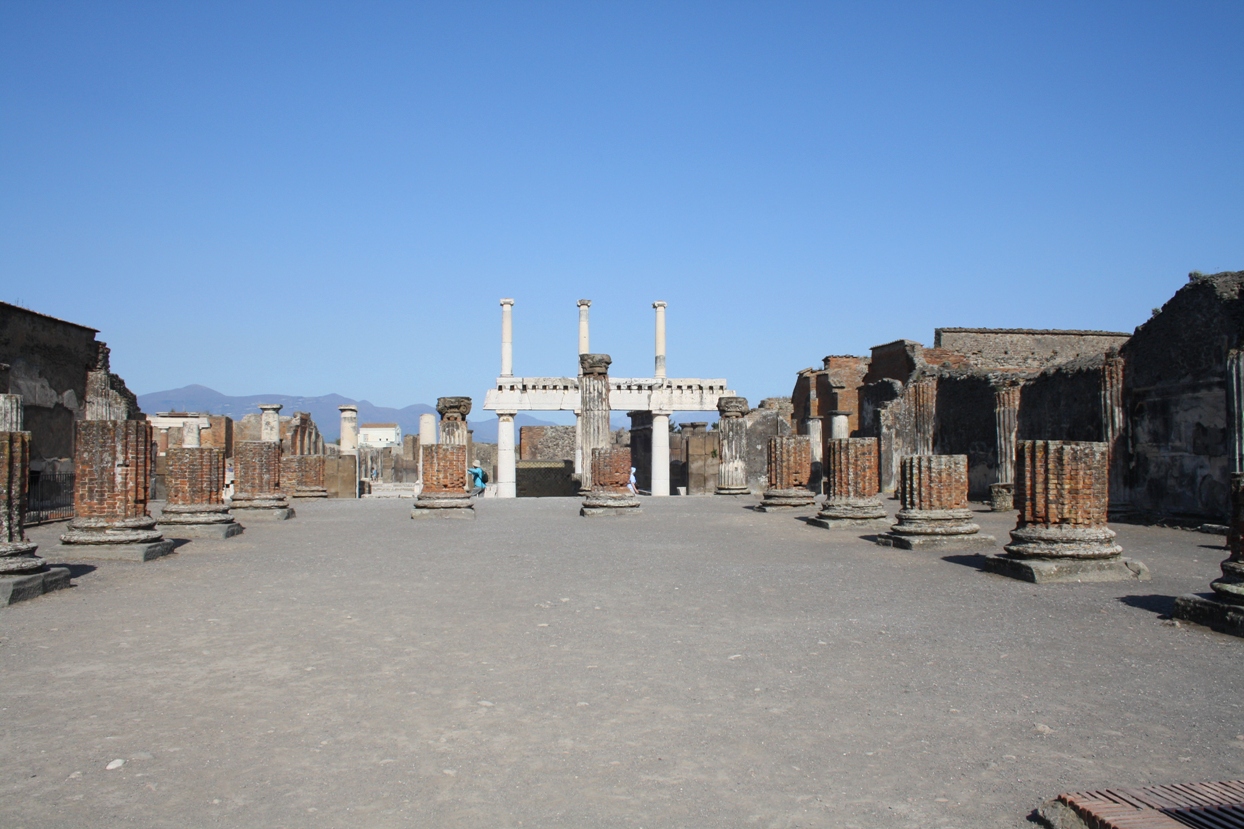
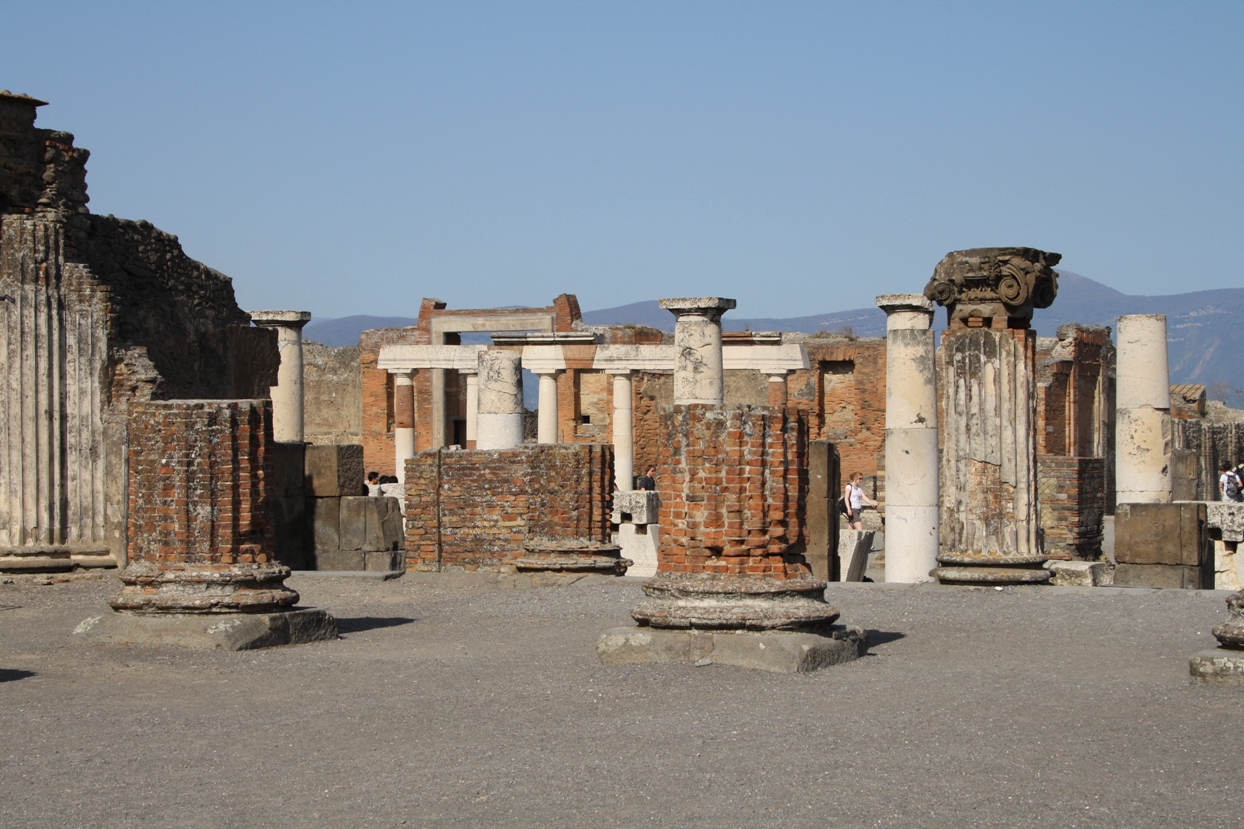
All of these structures used to be covered with marble.
When the Romans first began building, they used solid marble construction, but quickly discovered that it crumbled during earthquakes.
Then they initiated a construction method using flat, interconnected, interleaved bricks with mortar.
They covered this with a thin veneer of marble, and this type of construction survived most earthquakes.
Of course, volcanoes were a whole other story. Marble can actually burn.
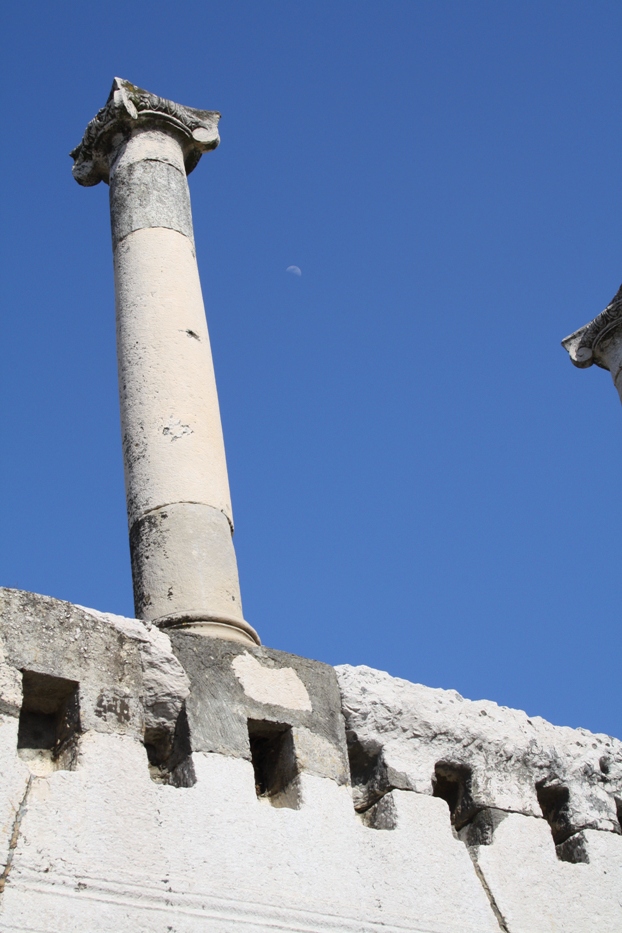
Check out the moon!
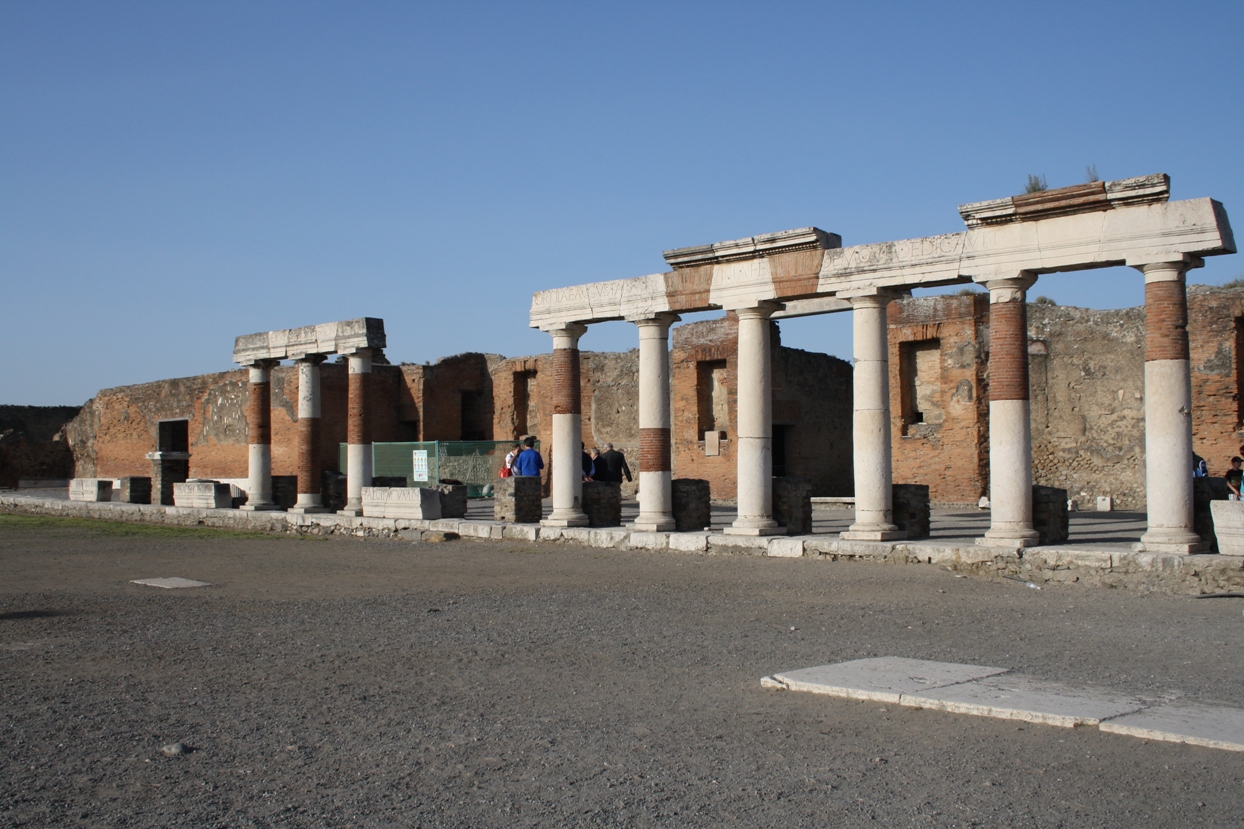
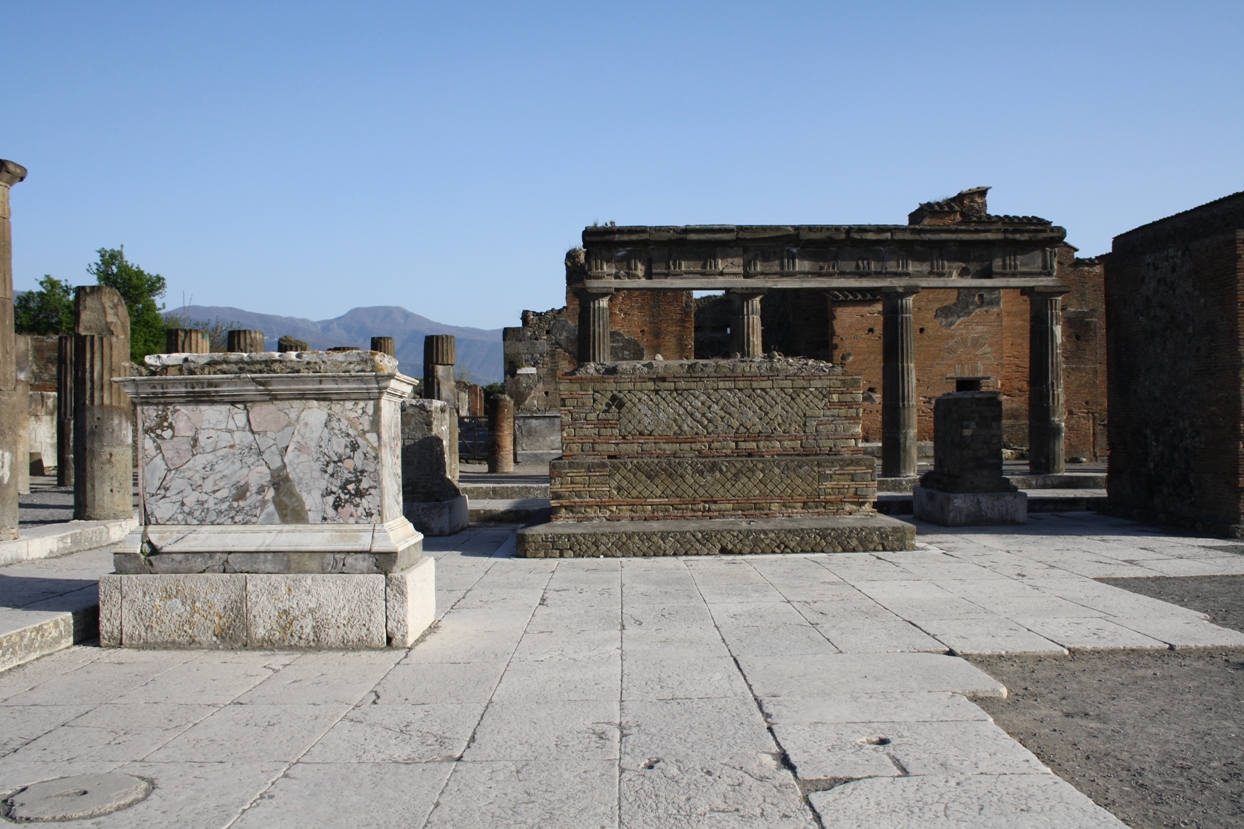
This piece of colorful marble, on the left, somehow survived the volcano.
Imagine an entire gleaming city of this stuff!
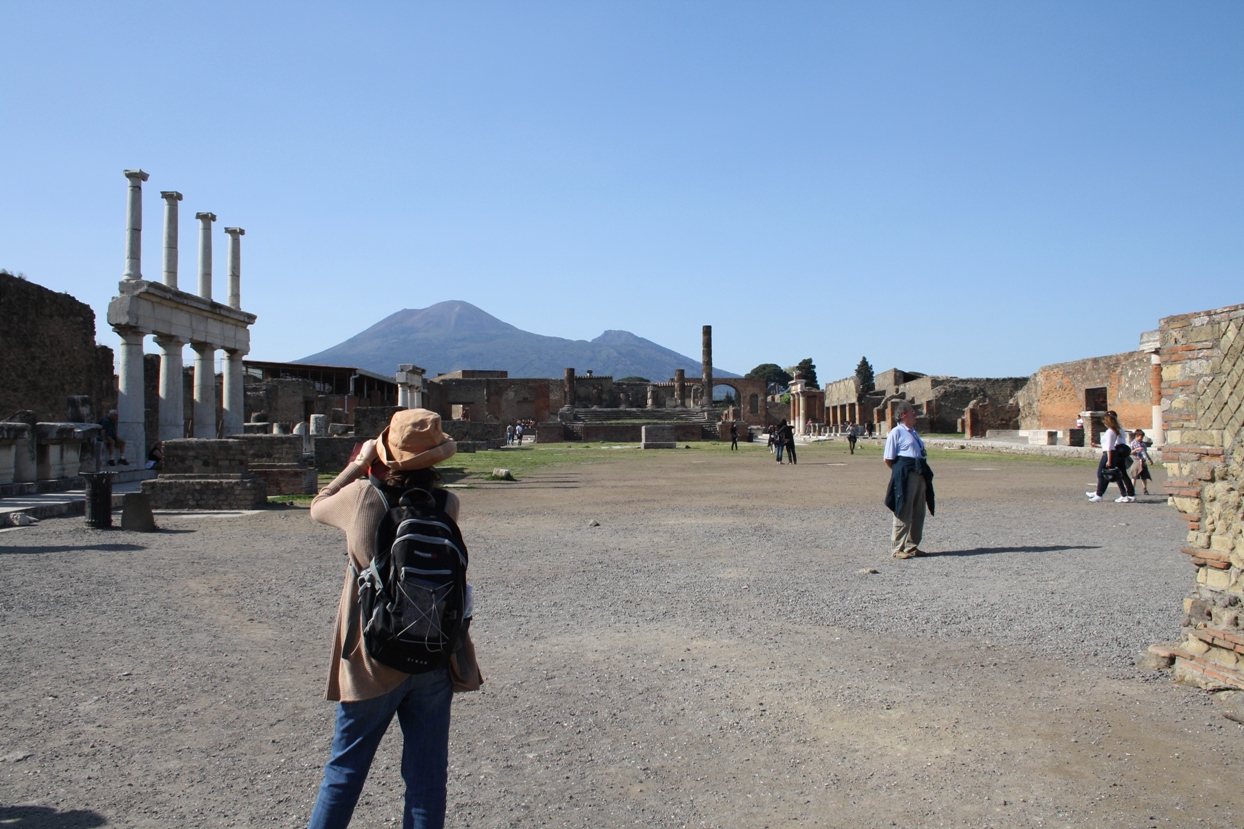
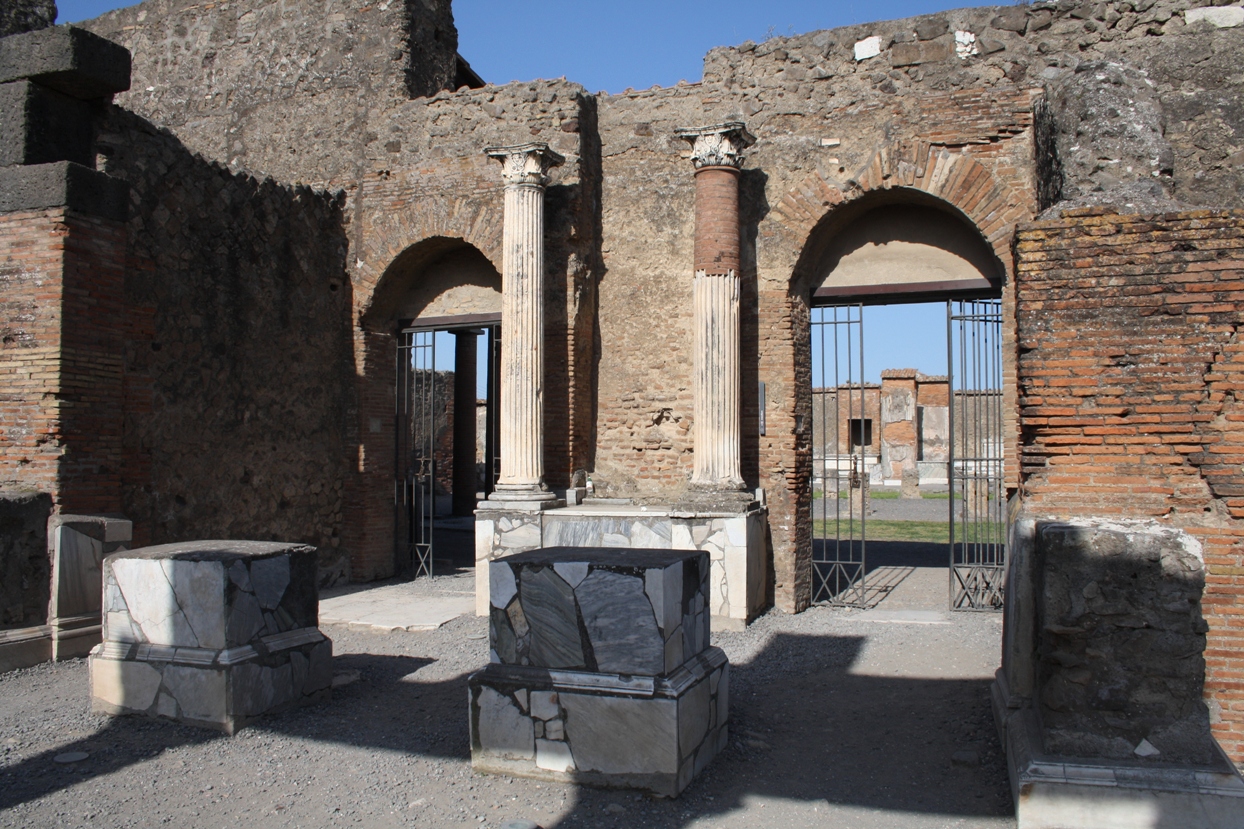
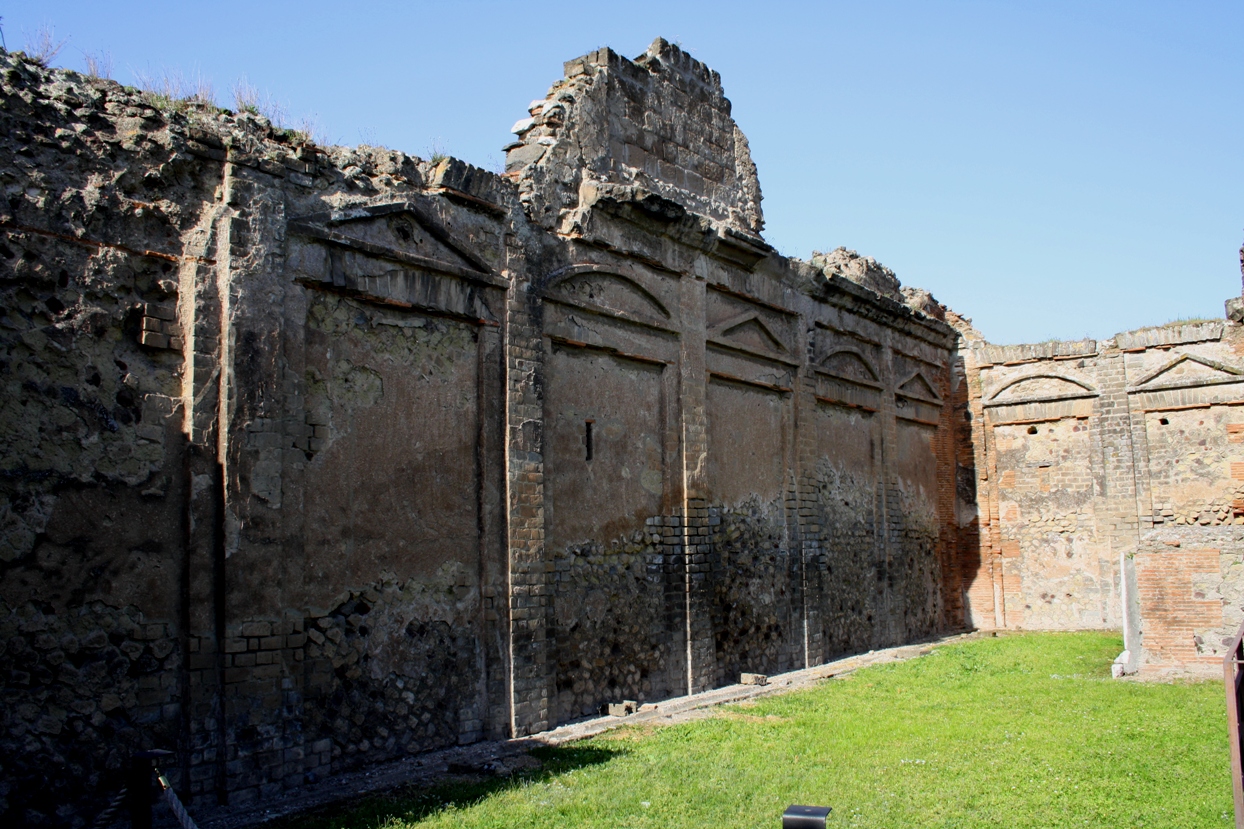
Note the alternating triangular and oval sections of trim in the upper sections of the walls.
Check out the windows of the White House in Washington, D.C. Does the design look familiar?
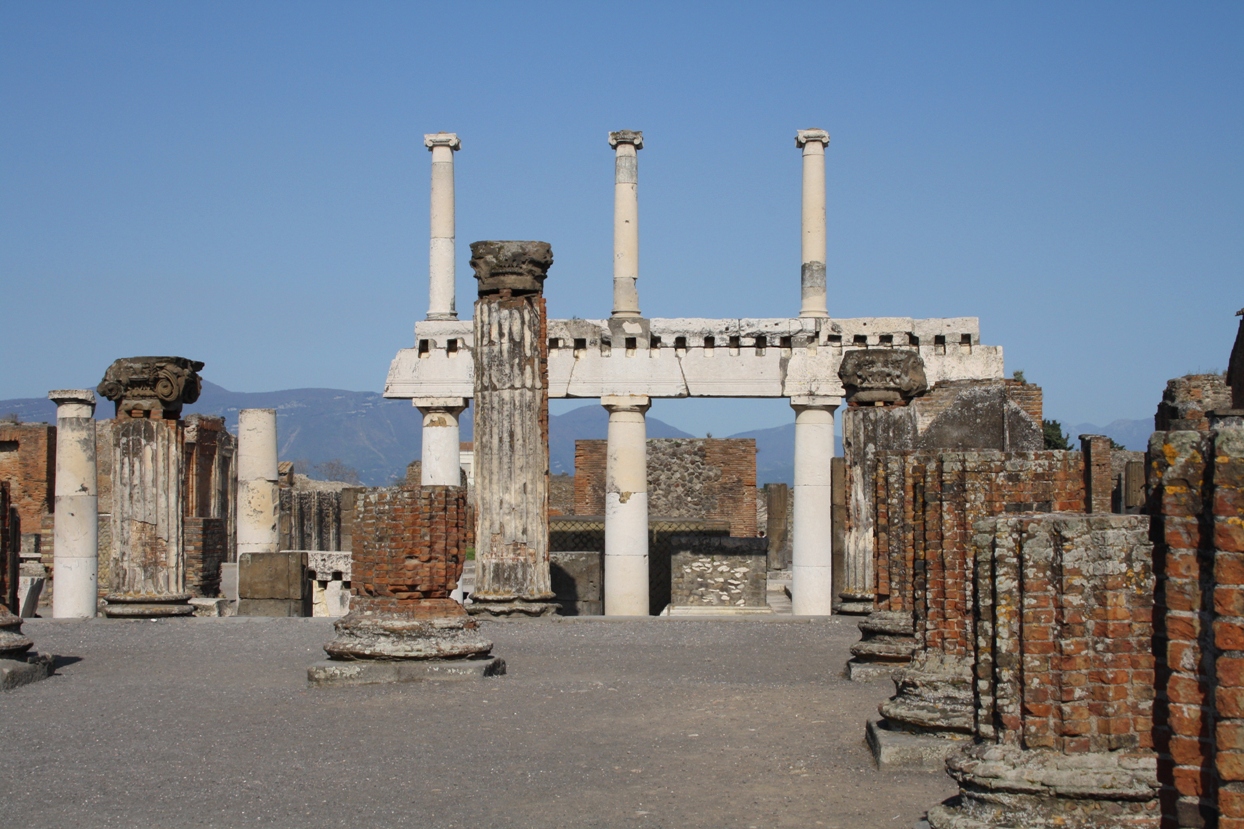
All photos are copyrighted by Wingspread Recording Ltd. Co.
All rights reserved.